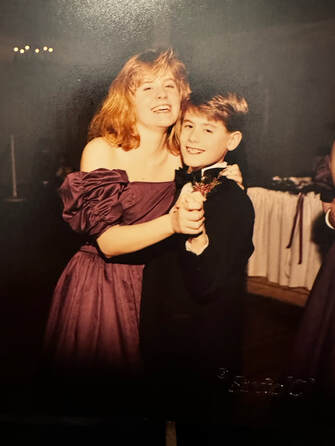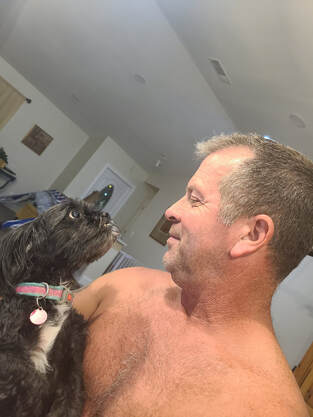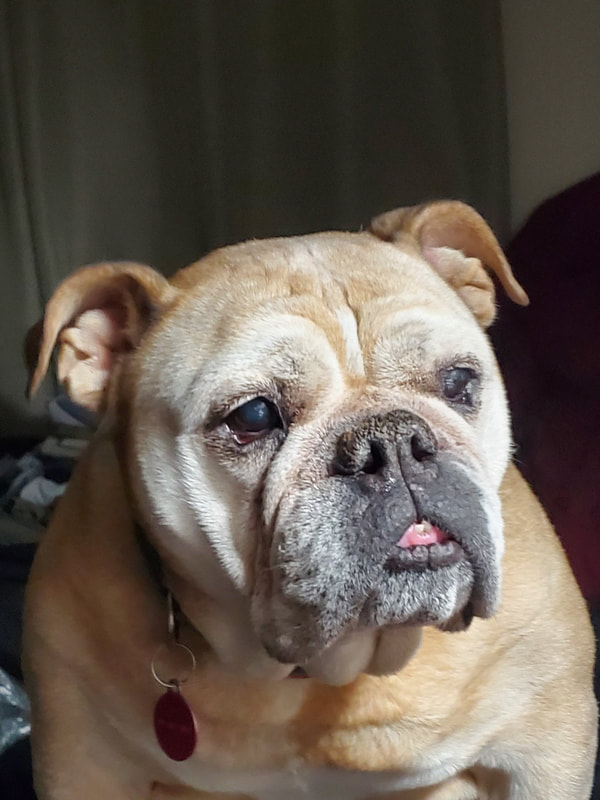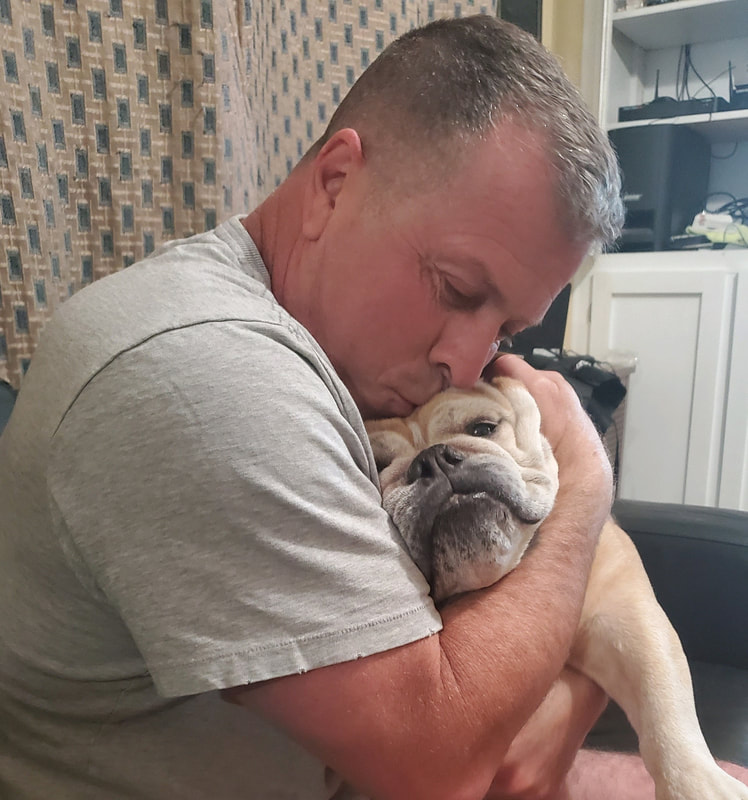 My brother died in January. He and I had been closest as children and into early adulthood. He was my “first person” in the world and I couldn’t have picked a better boy with whom to explore this planet. His death was like an axe which broke my frozen heart. I happen to be working in an Assisted Living Facility these days. I immediately went back to work after hearing that my brother had died. I needed distraction. But I found so much more than that. I found three people who reside in one building: they each helped me to release the pent-up stoic tears that refused to fall. The first person is a Jewish female with large eyes that look like wells of ink. She is 86 and has traveled the world. Her apartment is full of exotic art from Asia. When I told her about my brother, she told me that her brother had also died. And that she stayed in bed eating very buttery popcorn for a month thereafter. But she also told me this: “I was married to a man who left me for another man in the 1970’s. This may not seem like a big deal these days, but it was back then. My daughter was ruined by this. I later met another man, who was a great match. But I never married him because I was too afraid to hurt my daughter.” This woman had lost a brother, a marriage and was carrying the pain of her grown child. The second person is an Italian woman with the skinniest legs you have ever seen. She is 96, has a theatrical presence and also has the kind of dementia where she flits from this world to another in a span of seconds. This woman wears a sea captain’s hat and large movie star sunglasses. I took her on a walk outside in the sun and told her about my brother. She paused and as she was speaking to me, her forgetfulness vanished. “My sister Louise killed herself. I tried to kill myself years ago, and failed. I realized that planning your own death is a lot of work and I didn’t want to go through with that again.” She wasn’t able to recall the details of her suicide attempt or when it occurred. But she finished the conversation with these words: “Your mother must be so distraught. I can feel her pain. She lost her son. But don’t lose sight of the fact that she still has you!” The third person is a tall and elegant gentleman who is 87. He’d been quite successful in life and wears a red cardigan every day, even in the Florida heat. I knew his wife had recently died, but she had been nonverbal and bedbound for the last five years preceding her death. “I used to visit her every day and spoon feed her lunch. It was incredibly hard to watch someone you love suffer for years on end,” he told me. My brother had suffered from mental illness and I knew what this man meant about prolonged pain. He and I hadn’t spoken during the last five years because there was too much rage between us.  I asked this man how he got through what he had. “I used to play golf. It was great for business, but I also loved the sport. I learned something that made my game improve. You’ve got to surround yourself with players who are better than you. When you do this, in any arena in life, you will find that you will push yourself to be better, stronger and you will be the kind of person who tackles problems with more courage because of it.” In ruminating about loss, which I am quite prone to doing, I now catch myself before the thoughts begin to control me. I can grieve better because of these three people who I met at just the right time. They are all different, these three, but they all are better players at the game of loss. I can think of no better way to heal than this kind of interconnectedness. (Although lying in bed for a month eating buttery popcorn helps with healing too). Whether you are faced with a cancer diagnosis, death of a loved one or even losing a job that you adored, it is important to surround yourself with better players at grief. Seek them out and they will appear. Because these players want to help you and they know that perhaps the only way they can is to tell you, “I know what you are feeling. This pain is very real. Let’s carry it together.”
5 Comments
 My friend Dawn was the caregiver for her mother. Dawn’s Mom had cancer and was slowly dying, and it worried Dawn to no end how and when her Mom would pass. Each morning she would tread towards her Mom’s bedroom and check her pulse to see if she was still alive. Dawn’s Mom was a playful person who would open her eyes and shout, “I’m still alive, honey! You’ll know when I am ready to leave. I will send you a sign.” Several months into this morning exchange, Dawn left the house to go to the pharmacy. She never left her Mom alone, but needed to pick up pain medication that her Mom desperately required. While driving back home, Dawn turned on the radio in her car and heard Tom Jones sing the “Green Green Grass of Home”. It was then that her fear disappeared, for this was her mother’s favorite song. Dawn was filled with deep calm as she placed her key in the front door, opened it up and saw her Mom on the sofa, eyes closed with a smile upon her face. “I never realized that death could be so peaceful,” Dawn remarked. “My Mom said she would send me a sign and that song was it. My Mom loved Tom Jones so much and was one of those women who went to his concerts and threw her panties on the stage. But his song about returning home and being lain underneath the old oak tree in the green, green grass of home told me that my Mom was perfectly fine. And now I am, too.” I had forgotten this story until recently. My husband Freddy and I owned a dog named Roxie. She was one of a pack of dogs, and she didn’t seek to be the star of the group. But she was so feisty and would stand up to anyone who threatened the others; she was small, but mighty. We had no idea how old she was, because we rescued her from an abusive situation and the vet couldn’t discern her age when we got her years back. In the middle of this September, Roxie developed a round, hard belly. We took her to the vet and an X-ray revealed that there was a mass inside of her, but the vet couldn’t figure out what was the cause of this new growth. We were offered an abdominal ultrasound and biopsy to the tune of $900, and declined to look further. After all, Roxie was old and we didn’t want her to undergo probing and prodding, given that she was so happy and still wrestling with the other dogs.  Whatever was in Roxie’s belly grew rapidly. It became hard to watch her body expand, while her extremities became thin as her abdomen quadrupled in size. I was glad that doggies don’t look at themselves in mirrors, because it seemed that Roxie had no awareness that she was so misshapen. Yet when she stopped eating, Freddy and I knew that it was time to take her to the vet and put her down. We carried her into the vet’s office and were immediately ushered into a private room. Freddy cradled Roxie as the worker told us what would happen next. This wasn’t our first rodeo in this department, but choosing to end the life of a pet always comes with a unique sense of loss. While we knew it was time for Roxie to leave us, and the workers assured us that we were doing the kindest thing for our baby, it was still a terrible sensation. There is a lining that surrounds the hearts of human and animals and it is called the pericardium. Losing a beloved pet feels to me as though that lining of the heart is being peeled away. But something was distinctly different about this day at the vet for us and for Roxie. First, we never had to endure sitting in the waiting room, with all the other dogs and happy owners who were there. Secondly, the kind workers in the office took Roxie into the back room to sedate her so she wasn’t afraid. They also inserted a catheter that went straight to her little heart, so that when she was ready to fall asleep, they wouldn’t have to poke her while looking for a vein. (I’ve watched that happen with one of my other dogs and the vet couldn’t find a vein, while the doggie was in agony and needed more expeditious help). Lastly, they wrapped Roxie in a blanket and nestled her back into Freddy’s arms. The workers gave us a little button (it looked like a doorbell), and told us to take as much time as we needed alone with Roxie until we were ready for the vet to come in and give her the injection. All manner of thoughts went through our minds. We wept and shared memories of her strength and tenacity as she looked at the both of us in wonder. When it was time, I pressed the button. A lovely vet entered the room. She crept behind Freddy’s chair and attached a syringe to the catheter on the dog as her owner held her close. Roxie’s heart stopped beating and she fell sound asleep at last. We were then told to take our time and press the button again when we were ready to leave the building and say goodbye for good. When we did, another worker took Roxie from Freddy and carried her away, still wrapped in a blanket. I’ve never seen the death of any creature, human or animal, handled with such grace. Most of the time, animals are placed on a stainless steel table for the End Of Life moment and the humans must crouch down to look at their faces and touch them. This was the first time I have ever witnessed the animal being wrapped in a blanket and held by the human who was the one who loved her best. It was also the first time that I observed the vet’s presence in the room as stealthy and deft – that vet was like a little ninja who crept about and allowed us to mourn without interference. And finally, Roxie was not left alone on the stainless steel table, but was carried away by a person. Everything about this day of letting go of Roxie reminds me of Dawn and her Mom. Dawn had feared the loss of her mother for so long, she had tried to anticipate the loss before it happened, she had checked on her Mom each morning to see if she were still alive. It wasn’t until she left the house and surrendered control of the situation that she heard the “Green Green Grass of Home”. I suppose what we fear most about death is surrendering control. I am reminded of how scary that is, but from this day with Roxie, I also have respect for this surrender. This respect was possible because of the manner in which Roxie died. She was held by Freddy in a blanket with few other people around to confuse her. There was no stainless steel table, no long explanations from the staff, just a seamless attachment of a syringe to a catheter, followed by deep rest for Roxie. I know the feeling that Dawn had when she came home to find her Mom in deep rest on the sofa. She was no longer afraid. Whenever I think of Roxie now, I recall the words of that poignant song by Tom Jones…”Yes, they’ll all come to see me in the shade of that old oak tree, as they lay me ‘neath the green green grass of home.”
I like living with Freddy. When I was a younger pup, I used to sit in his living room and wait for him to come home. Freddy worked a lot back then. He left me alone each morning, but I kept myself busy. He bought me a black leather sofa and the sun streamed through the windows of the living room. There were little specks of dust in the sunshine and I used to leap up to catch them in my mouth. I can’t jump anymore, because I am twelve years old. But I remember when I could. Freddy had a black box and out of it came vibrations that soothed me while he was gone. He called it “spa music” and he turned it on before leaving each morning. After the sun went down and there were no more specks in the sun to catch, I waited by the door for Freddy to come back. It was that time of day when I knew how much he needed me. He crouched down and kissed my head and told me that I was the best girl ever.
The years flew by. I began to get some pain in my hind legs. Freddy was going to get me surgery on something called my “ACL” but I got so angry in the surgeon’s office that he decided against it. I learned how to keep walking on my back legs, but my left one hurt a lot when it rained or snowed. Freddy brought me to a very kind doctor (a man, thank goodness), who gave me little white pills in a beef flavored snack. This helped my pain and I was still able to climb stairs for a long time. Then, things started to change. I got nervous when Freddy began putting all our things into boxes. He even got rid of my black leather sofa. I became quite angry with him. I turned my butt in his direction while more and more items left our home. But every night I forgot to be angry when Freddy lifted me up on his bed. The woman with the pale hair was also with us. This woman seemed less sad than she used to be. Both Freddy and the woman talked about a place called Florida. Were we going someplace else? Why hadn’t they consulted me? I didn’t want to go to Florida! One day, Freddy lifted me into his truck. I like rides. But this one felt different. Freddy sat in the front of the truck and held a round wheel. The woman with the pale hair sat next to him. I sat in the back seat and felt very confused. This trip was taking a very long time. I began to notice the vibration of the truck. I didn’t like it. My back legs started hurting. I began to gasp from the pain and Freddy stopped the truck and gave me the white pills in the beef flavored snack. He even put on the “spa music” because he knew I liked it. The trip continued. Freddy pulled the truck over. He knew not to bring me into a motel. I hate motels. The carpets and the sheets smell like strong chemicals. This makes it so I cannot breathe right. We stayed in Freddy’s truck and there were lights overhead. Next to us were other long trucks. The air was hot. Freddy played the “spa music” as we all tried to sleep. But I couldn’t sleep. The woman with the pale hair couldn’t either. She looked back at me every so often. She was worried about something big. Freddy woke up and the vibration of his truck started again. The trip wouldn’t end. It was taking too long. I started to have more pain in my legs and couldn’t breathe. Freddy kept stopping and putting me on the ground but it smelled totally different. There was mold everywhere. There were different plants on the ground. I kept hearing the word Florida and knew that we were here. But if we were here, why did we have to get back in the truck to keep traveling? And what did Freddy and the woman like about Florida? I was feeling worse with each moment. Why couldn’t we all go back to the black leather sofa with the specks inside the sunshine through the window? It was then that I peed all over Freddy’s truck.
My legs no longer hurt me. My body settled into the black leather like the shape my body had made in the sofa from Freddy’s house. I no longer minded the idea of Florida at all! This was a beautiful place…except that Freddy wasn’t part of what was happening now. He wasn’t part of the sunshine and the specks of dust. He couldn’t see that I could jump again.
I didn’t know what to do. I had to make a choice. I’ve always put Freddy first, always taken care of him and have always been his best girl. How could I possibly leave him alone? What would he do without me? I tried to focus on the hurt in my legs and my difficulty breathing, but I knew I couldn’t stay with him. I remembered the smell of my father when I was a pup. I remembered going to Freddy’s house for the first time. And then I knew what to do. I nuzzled my snout against the elbow of the woman with the pale hair. I spoke quietly, so that only she could hear me. “Tell Freddy that I have to go someplace now. I wish I didn’t have to. He isn’t going to do well without me. But you know how to take care of him like I do. I want you to tell him I am worth crying for, and he will cry every day for a really long time. Also, I don’t like girls, but you’ll do in this case.” The woman nodded. She placed her hand on the top of my head and I closed my eyes. I let out a very long sigh. The Florida sky led me right to where I am going to stay forever. I’ll be waiting at Freddy’s door. |
Archives
October 2021
Categories
All
|



